Vertical farming is not new when it comes to vegetable production, but there is always an introduction that deserves the attention of producers. After all, production sustainability and the rationalization of resources are not something that can be disregarded.
If we add energy saving to this, then the system patented by engineer Graziano Parrinello and professor David Giuseppe deserves a mention as it "enables the same productivity of vertical farms but without the energy costs deriving from artificial lighting."
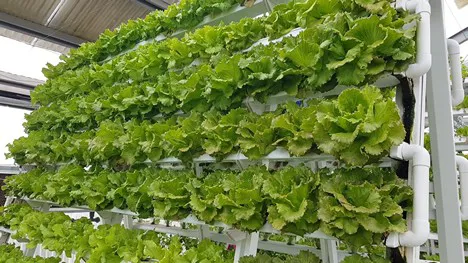
"Our module has a productive capacity of 144,000 heads a year on 300 m², so over 480 units per square meter/year need only around one hundred liters of water a day on average, and the energy consumption is fully met by our 2 kw solar panels. This way, we produce vegetables that easily exceed 250 grams for an annual productivity of 35,000 kg, i.e., over 120 kg/year of produce per square meter."
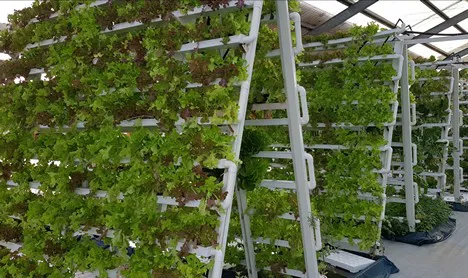
"It is a module for the cultivation of leaf vegetables that employs aquaponic technology applied to vertical farming. Here, the 'chemical motor' of the whole apparatus is a 10,000-liter fish farm where we breed over 600 kg of largemouth bass."
"This fish farm generates the chemical energy needed. Basically, the water from the farm provides us with the nutrients needed to grow over 35,000 kg of leaf vegetables a year, including lettuce, chicory, spinach, and much more. We have an operative prototype that has been producing in phases for over three years and on which we continue to experiment with different crops. So far, we have only partly distributed the products, mostly by donating them, as we are actually an association. For the next step, we are counting on obtaining the support of investors interested in our patent. In addition, we want to become an actual start-up at the service of companies to provide them with turnkey vertical farming systems."
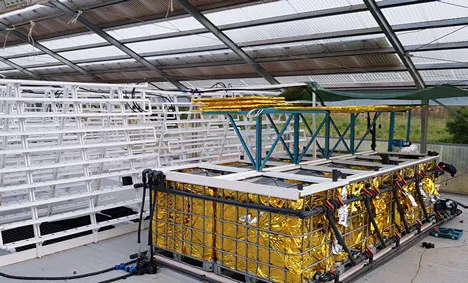
Why would anyone invest in your project?
"The answer is simple: in addition to the characteristics already mentioned, our production system costs around €1,000/sq m and includes a cover and an air conditioning system, meaning a 300 sq m greenhouse would cost roughly €300,000 with a return on the investment in just two years and a half. Rather than selling systems, we are actually more focused on finding partners to develop a large project for the spreading and distribution of technology. The idea is to collaborate with large companies to produce a whole series of fruiting vegetables with our aquaponic technology that can then be placed on the market under a single brand."
What about the limit constituted by fish feed?
The system can reach complete autonomy "by introducing insect breeding and using vegetable waste to nourish the fish. Today we have the technical skills to reach a complete production loop independent from external factors with very low energy and water consumption."
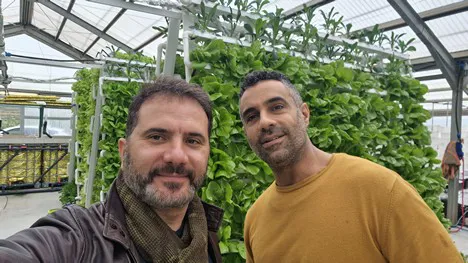 Graziano Parrinello and David Giuseppe
Graziano Parrinello and David Giuseppe
Is the labor needed almost zero?
"The system's high technology level means it can be managed by a single person in charge of the arrangement and harvesting of the crop. The system is, in fact, completely autonomous. It was designed with triple redundancy, and it can be managed remotely. When it comes to environmental sustainability, aquaponics is a winning choice in itself due to the intrinsic characteristics of this technology: first of all, it produces animal and vegetable proteins at the same time, and, secondly, it uses a system where no pesticides or weeders can be used as they would destroy the biodynamic balance between the animals and fish."
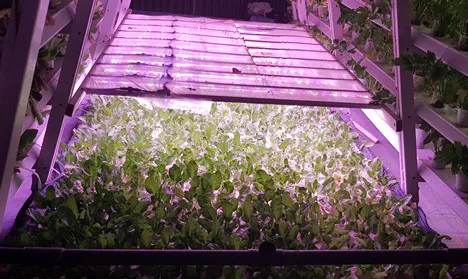
Another innovation is the distribution of living vegetables, i.e., with the roots still intact and able to survive for days in the houses of consumers, "definitely zeroing the cold chain" and thus further reducing environmental impacts and food waste.
"An additional innovation is the interpretation of this technology in a way to make it actually productive so, in addition to making the system excellent in terms of sustainability, we have also made it extremely productive. We have interpreted the production process making it as democratic as possible, i.e., thinking about small capillarized productive systems. Family-run micro-businesses are capable of giving productivity to large businesses. The organoleptic properties of aquaponic products are also documented by FAO as equivalent if not superior to those of natural organic products."
For more information:
Graziano Parrinello
Tel.: +39 3804908927
ing.grazianoparrinello@gmail.com
